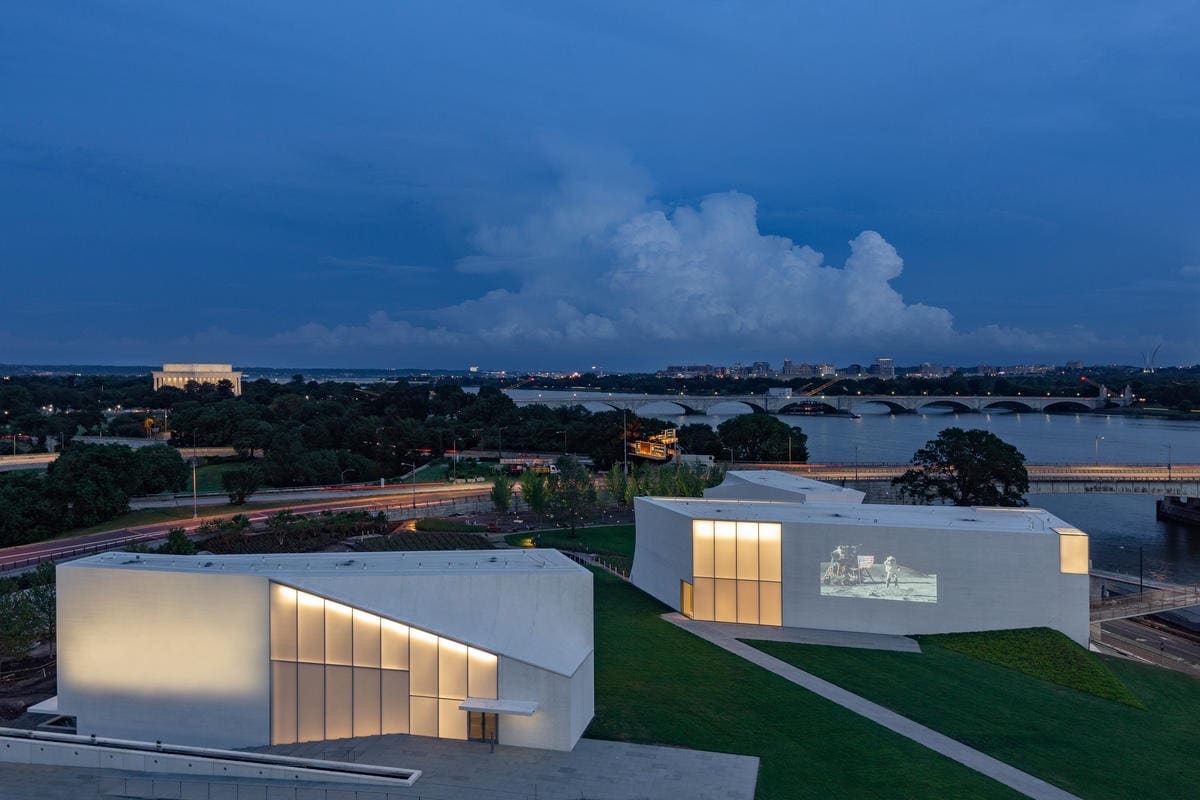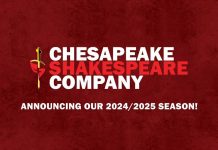Sensuous and just a bit sly, the smooth white pavilions of the Kennedy Center’s new REACH complex wink at us amidst undulating grassy berms. One rises up from the green lawn, curling like an oncoming wave. Another peeks out and then slips away beneath a gentle hill. In stark contrast to the cool classicism of Edward Durrell Stone’s original 1971 arts complex, the REACH’s “come hither” magnetism promises a different sort of experience than its more formal neighbor. And that is really the point.

Where the Kennedy Center’s vast performance halls invite us to park, sit, observe, and leave, the REACH has different aspirations. Watch a choreographer create a new dance. Take part in a musical or comedy workshop. Witness the fusion of theater, dance, and music as artists work together. “There is no backstage,” Lauren Holland, Public Relations Coordinator at Kennedy Center mentioned on a recent tour of the space. In this innovative new complex, the creative act takes place in plain view of anyone who stops by.
A good deal of research on audience engagement, plus the advice of many stakeholders, has factored into the design. Multiple academic studies conclude that today’s emerging audiences no longer wish to simply experience a performance from fixed seats facing the stage. They want to go backstage, learn how the magic is created, and interact with the performers.
Architect Steven Holl has taken this trend to heart in his bold design for the REACH. An acknowledged master of creating new spaces that harmonize with their surroundings, he has successfully joined the original performing arts center with the new complex. With 130,000 square feet of green space and public gardens that extend a wide welcome to the public, the REACH’s vast outdoors actually enhance the adjacent older building which now seems more anchored, inviting, and accessible. Both buildings can now be reached via a handsome pedestrian bridge across Rock Creek Parkway, connecting the campus to the riverside walking trail.
Inside, 72,000 square feet of flexible space includes ten defined multi-use rooms. While intimate (no single area accommodates more than 525 people and most are designed for far fewer), the studios and galleries never feel cramped. Holl has sculpted nearly all of them with soaring ceilings and natural light that flows in from expansive views of the Potomac or the REACH’s lawns. Interior viewing windows funnel additional illumination from the outdoors. As the light changes, so do the shadows and hence the mood of the galleries and classrooms. Only the handsome Justice Forum, with its 144 cherry-wood fixed seats, can be totally darkened.

Innovative building materials including crinkled and titanium-studded concrete provide brightness, textural variation, and acoustic control. Nips and tucks in the Welcome Lobby, decorated with custom-made furniture, offer intimate conversation areas. Massive sculptures dot the 4.6-acre landscape. Joel’s Shapiro’s untitled 24’ blue figure kicks up its leg like a modern dancer on the Upper Lawn facing the Potomac. Deborah Butterfield’s Milk River, a life-size bronze horse, grazes in the delicate Ginkgo Grove of 35 trees honoring our 35th president. An enormous draped painting by esteemed Washington DC artist Sam Gilliam softens the interior. Cafés serve light food and drink, as well as offer space to sit, think, and talk.
There is no backstage. And that is precisely the point: In this innovative new complex, the creative act takes place in plain view of anyone who stops by.
Many of the spaces are affectionately named for aspects of JFK’s life, his family, and achievements. The Moonshot Studio is an interactive learning area where visitors and especially young people can take part in new arts experiences. PT109, named for the patrol boat that Kennedy commanded during WWII, provides working space for Kennedy Center internship and fellowship programs. The Macaroni classroom is named after Caroline Kennedy’s pony, a gift from Lyndon Johnson. Throughout the complex, etched in glass, are reminders of JFK’s passionate support for the arts. Visitors will read “I see little of more importance to the future of our country and our civilization than the full recognition of the place of the artist” inscribed on the River Pavilion wall.
The REACH’s ambitious, multi-genre Opening Festival, scheduled for September 7-22, 2019, will be the first opportunity for artists and their public to meet, talk, watch, and listen. Nearly 500 events – from jazz, dance, and hip hop to theater and film – will enliven all the performance areas inside and out. They kick off with a lively procession curated by esteemed artist Carrie Mae Weems. The National Symphony will perform Beethoven’s Ninth Symphony. Opera superstar Rene Fleming will join the dynamic Beninese singer and activist Angélique Kidjo and jazz pianist Jason Moran in concert.
Visitors can take part in a full-body workout with professional instructors set to music by a live jazz trio and attend a rap improvisation workshop. Daily films and videos are also part of the celebration. A screening of Amazing Grace, the newly restored Aretha Franklin concert film, will be projected onto a panoramic outside video wall. All events are free but timed passes are required. Passes and a full schedule of events are available here.

The Kennedy Center staff hopes this bold new design will foster conversations and collaboration among artists, and between artists and the public, in person. In particular, they hope it will become a well-used resource for the DC arts community. Much remains to be seen as to how artists and the public adapt themselves to this important new addition to DC’s cultural life – a work of art in itself. Will artists truly welcome the transparency that the REACH provides, and will visitors take full advantage of the opportunities it offers? The Kennedy Center and its visitors have much to teach each other, and just as much to learn.
The REACH Opening Festival runs September 7 to 22, 2019, at The John F. Kennedy Center for the Performing Arts, 2700 F Street, NW Washington, DC. The complete schedule is here. Free timed passes are available at the box office, by calling (202) 467-4600, or online.




